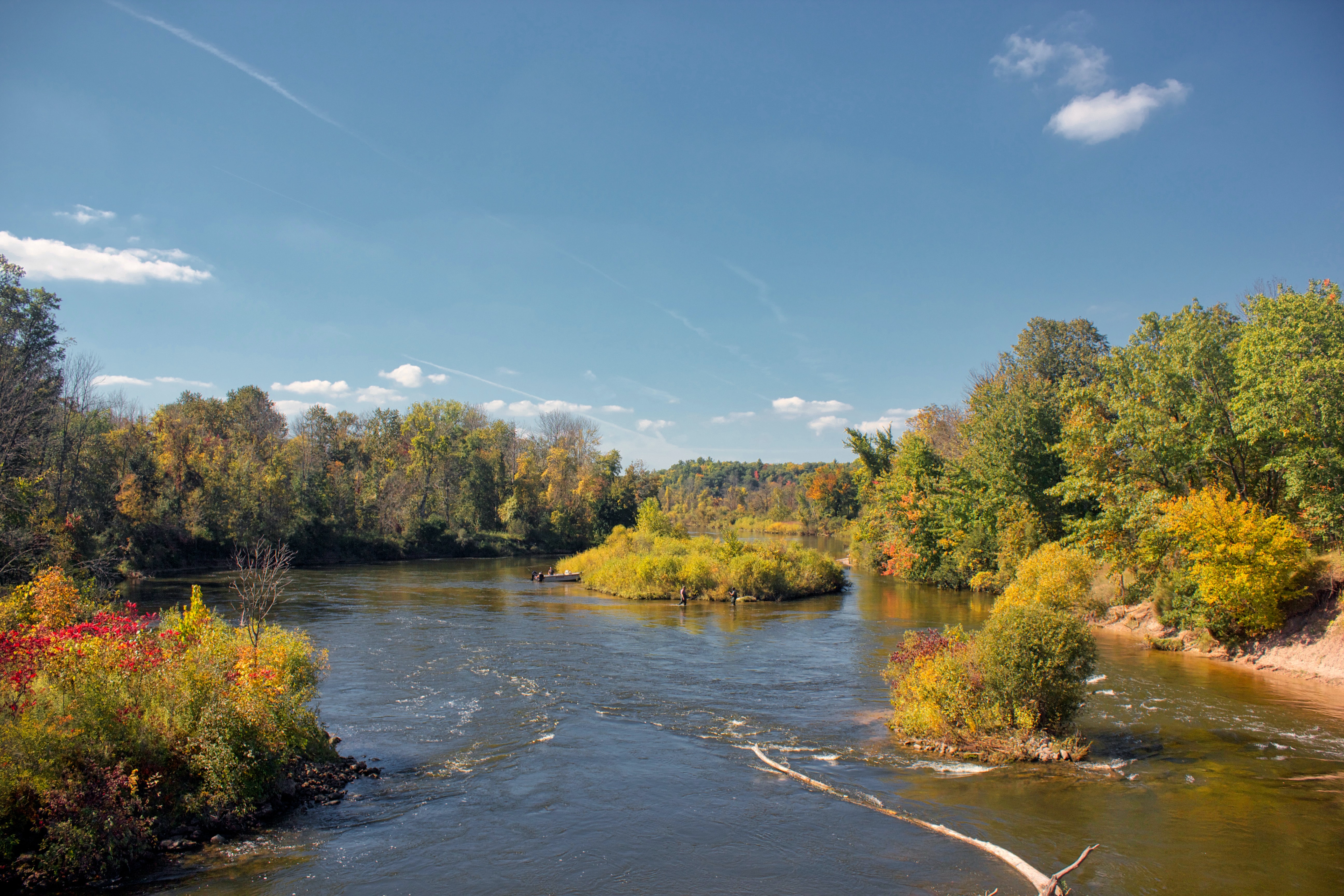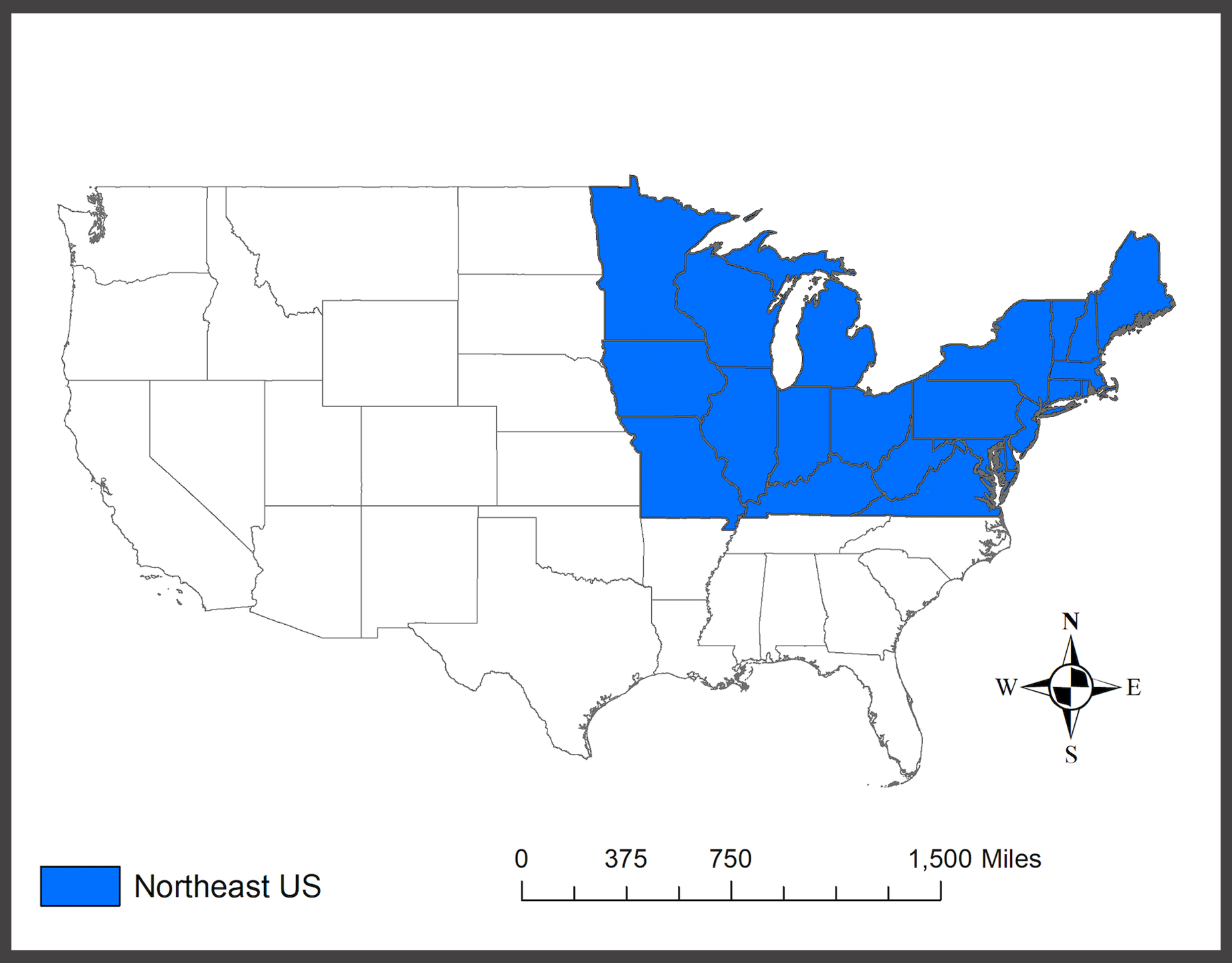Examining the impact of climate change on freshwater fish
Research in the MSU Department of Fisheries and Wildlife uses maps and models to create a more sustainable future for Michigan waters and the fish that live in them.

Climate change is one of the most pressing issues in agriculture and natural resources. It could have particularly harsh consequences for fish, which are incredibly sensitive to changes in temperature.

According to a study from the Environmental Law and Policy Center, the Great Lakes basin warmed by 1.6 degrees Fahrenheit annually from 1985-2016, higher than the national annual average of 1.2 degrees Fahrenheit.
Warmer air temperature means warmer water. This, along with changes in precipitation throughout the Great Lakes basin, impacts Michigan’s rivers, streams and lakes. In addition, human land use can cause damage to fisheries and the areas surrounding them.
“Michigan’s diverse fisheries — warm water, cool water, cold water — attract anglers from throughout the Great Lakes region to our state,” said Dana Infante, professor in the Michigan State University (MSU) Department of Fisheries and Wildlife. “If we start getting changes in the habitats that support these species, we can expect to see a loss of species, which could mean we lose fisheries.”
Research in Infante’s lab focuses on using maps and modeling to analyze the effects of climate change on Michigan fish. Erin Tracy, a former master’s student, and Hao Yu, a current postdoctoral researcher, have conducted research to help create a more sustainable environmental and economic future for these waters and the fish that live in them.
Erin Tracy: River Resilience
Tracy, who now works as a researcher for the U.S. Geological Survey (USGS) Arizona Cooperative Fish and Wildlife Research Unit, applied information about the different landscapes surrounding Michigan rivers to create a map detailing how effective streams would be in withstanding climate change for her master’s degree research at MSU.

“Managers need more information about how climate change is going to affect rivers in the future,” Tracy said. “One way to get this kind of information is to estimate how naturally resilient these rivers are to disturbances, such as climate change.”
To assess resilience, Tracy and Infante gathered data on mostly natural landscape factors, but also focused on habitat diversity and anthropogenic factors, or environmental harm caused by humans.
“We looked at mostly landscape and physical factors that we know affect stream habitat, and therefore, affect fish,” Infante said. “First, we identified variables that, in theory, could promote resilience in stream fish habitat, based on existing literature. Then, we used statistical analyses to reduce them to a succinct group likely to influence stream resilience across Michigan.”
Infante and Tracy studied a variety of landscape variables, including:
- Forest cover on the edge of rivers that helps to naturally protect the water from potential impacts of adjacent land use and to keep water temperatures cooler.
- Catchment size, or the amount of land that drains into a river. Streams with larger catchment sizes generally have more diverse stream habitats (and more fish), which can buffer against species loss following disturbances, such as an extreme flood.
- Coarse geology, which refers to natural structures that allow water to pass easily. Streams with coarse geology can have more groundwater input and more stable temperatures and are less likely to change with changing air temperatures than streams with less pervious geology in their catchments.
- Length of streams. Longer stretches of streams, unimpeded by dams, offer fish more access to the range of habitats they may need for feeding and reproduction, and can buffer against species loss after a disturbance.
- Stressors caused by human activity, such as agriculture runoff and urban land use in catchments, along with water withdrawals. These factors can reduce resiliency by degrading water quality and indirectly altering water temperature.
Tracy and Infante created a scoring system to gauge differences in Michigan rivers.
“We scored each and added variable scores together to create a cumulative score for all the rivers in Michigan,” Tracy said..
The scores for each stream were then mapped into a geographical information system (GIS), a digital technology that managers use to inform decision-making.
“It really gives managers an opportunity to be able to proactively monitor waters across Michigan to protect and improve the resiliency of streams,” Tracy said.
Hao Yu: Fish Species Distribution
Yu analyzes many of the same factors as Tracy in order to create eight statistical distribution models of 55 fish species in 22 states from the Atlantic Coast to Minnesota, including Michigan. This project is being conducted for the USGS Northeast Climate Adaptation Science Center, a consortium of which MSU is a member, and the USGS Aquatic GAP Program.

“These models give us different scenarios in the future with different air temperatures and precipitation values,” Yu said. “Based on different scenarios, we'll get different predictions of how various climate change factors can affect fish distributions.”
“This research looks at where fish currently occur based on land use, geology and climate. It predicts where fish might be in the future and how their habitats are likely to change with different climate change projections,” Infante said. “It’s a really large-scale analysis at the types of changes, specific to fish, that we think could happen as a result of climate change.”
According to Yu, some fish are sensitive to changes in air temperature, while others are more sensitive to changes in precipitation.
His work also indicates that fish species along the Atlantic Coast are more likely to be influenced by climate change; and that warm water species, such as the yellow bullhead and the largemouth bass, have the highest habitat gain, while cold water species, such as brook trout, are more likely to experience loss of habitat.
“Different fish species exhibit diverse responses to climate change,” Yu said.
Eventually, Yu would like to expand the project nationally to at least 300 fish species and potentially other organisms, such as mussels and crayfish.
The future of this project will be based on priorities in 22 states where Yu’s research is concentrated. Creating models that simultaneously analyze a multitude of species will help managers take a holistic approach to their findings.
“Knowing how much habitat gain and loss species will experience and where those habitats occur is very important for managers and decision makers to help shape policies in the future,” Yu said.



 Print
Print Email
Email





